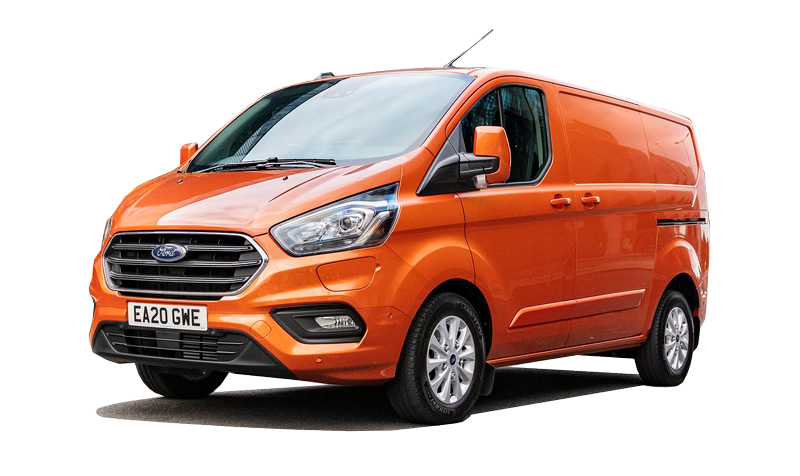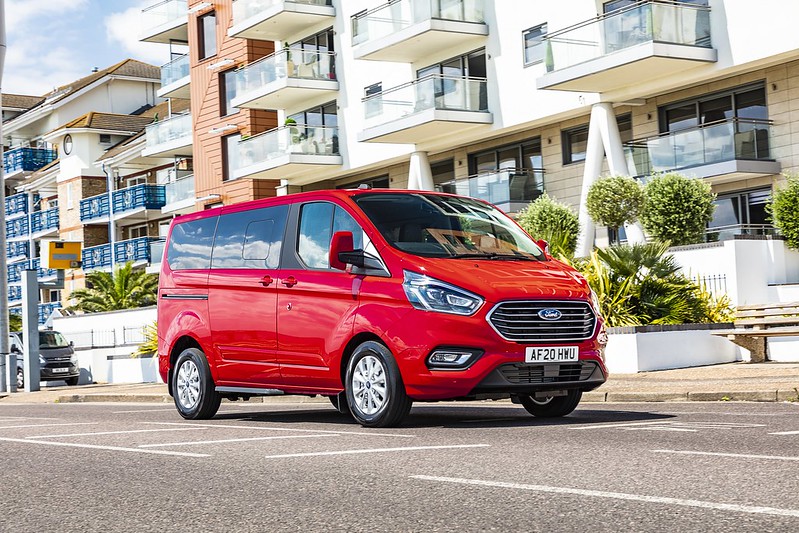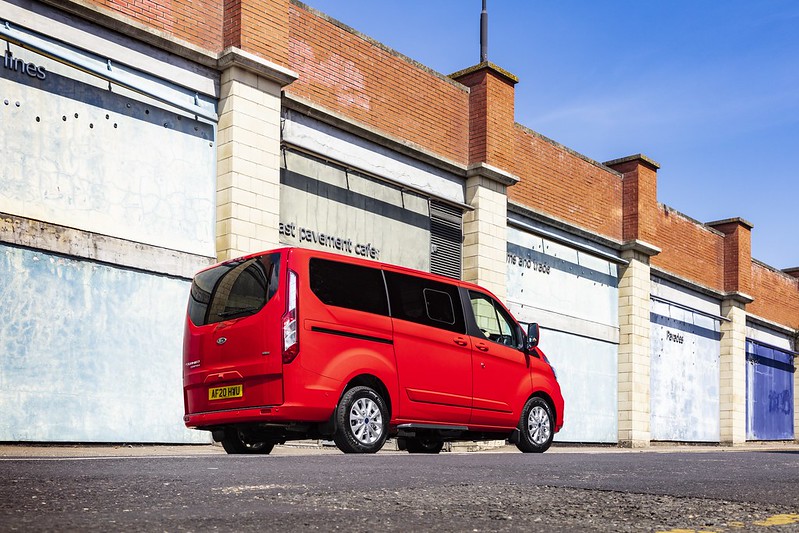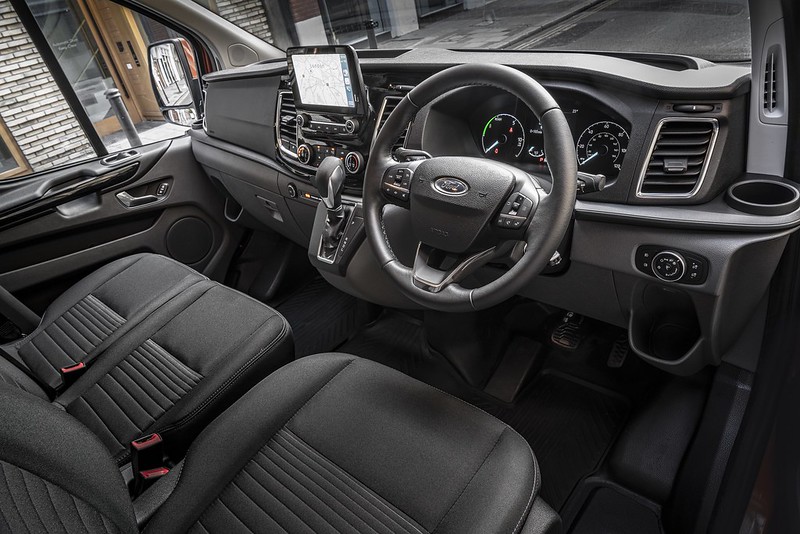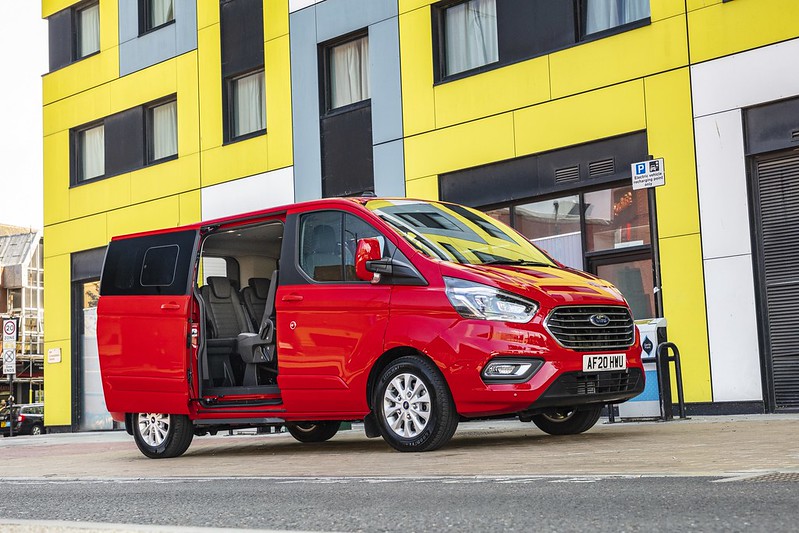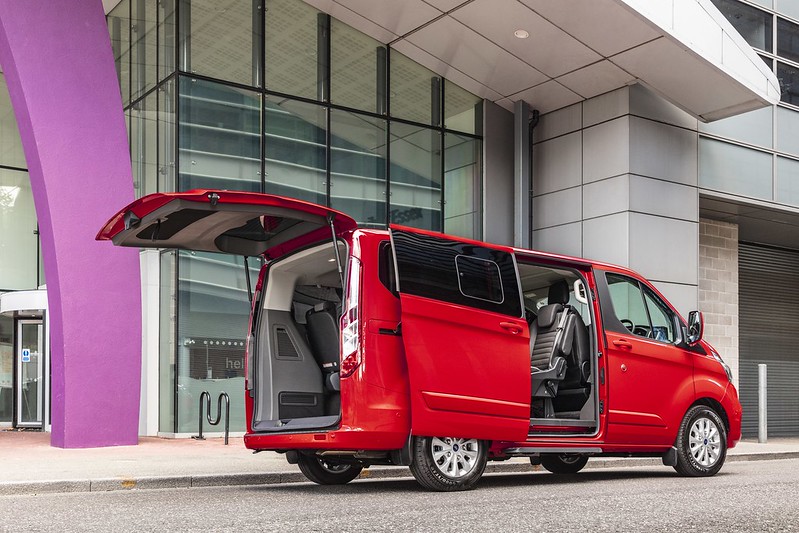Practicality and Boot Space
If you are buying a van, then load space is likely to be your number one priority. The Transit PHEV has exactly the same amount of space as the diesel version, which means 6m3 of space behind the fixed bulkhead.
This gives you a maximum load length of 2,554mm, with a 1,775mm width and 1,350mm between the wheel arches. There are also crew cab and Tourneo bus versions available if you want to swap loads for seats.
Payload is slightly reduced though, at 1,130kg versus 1,157kg for the equivalent diesel.
This means the Transit has more space than its biggest rivals – the short-wheelbase, pure electric Vauxhall Vivaro-e and its Citroen/Peugeot-badged equivalents – but the Ford has a smaller payload as the Vivaro can carry up to 1,226kgs and is rated to tow trailers too. The other alternative is the Nissan eNV-200 which is smaller all round (and, of course, cheaper) unless you opt for the ungainly aftermarket conversions to extend the load bay.
Other than the room for loads, the Transit is a very comfortable place to sit for the driver. As you may expect, it’s been designed for occupants who spend all day in the cab and as a result it has plenty of adjustability for all sorts of shapes and sizes.
Technology
Depending on which model you choose, it’s possible to get a Transit PHEV with all sorts of car-like goodies, including navigation and Apple CarPlay/Android Auto. Go for one of the posher trim levels and you’ll get Ford’s latest Sync 3 infotainment system – that’s the same touchscreen and voice-activated system that’s fitted to cars such as the Kuga PHEV.
The Transit is also available with a FordPass Connect modem, which gives 4G WiFi for up to ten devices. When combined with the FordPass app on your phone, you’ll be able to lock or unlock the Transit remotely.
Perhaps the most noteworthy feature though is the Transit’s geofencing technology. This uses GPS locators linked to detailed map databases to switch the engine on and off, making use of the electric power when it is needed most, such as in urban areas. This is crucial to making the Transit compliant with future Zero Emission Zones in cities such as London.
Safety
Usually the independent testing organisation EuroNCAP doesn’t test vans, but as the Transit is available as a people-carrier they did test it, back in 2012. The result was a top five-star rating, although it had less strict criteria than the current round of tests so isn’t really comparable to more recent results.
That said, the Transit has been updated since then with numerous electronic safety gadgets which aim to prevent an accident happening including automatic braking if the van senses a collision is imminent. There’s also a cross wind assistance control system which helps keep the high-sided Transit stable in high winds.
Pay a little extra for the options and you’ll be able to buy blind spot and lane departure warnings too.










